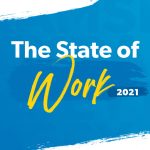The economy added 272,000 jobs last month, according to the U. S. Bureau of Labor Statistics report this morning. That was far more than economists expected and probably enough to keep the Federal Reserve Bank (Fed) from lowering interest rates for at least several months.
Unemployment hit 4 percent, an increase of .1 percent. That is the highest that figure has been in 27 months. You would have to go back to the early 1950s to see unemployment that low for so long.
Fed Caution
The Fed is moving slower than several central banks on rate cuts. The Bank of Canada dropped interest rates Wednesday and the European Central Bank did the same yesterday. However, the Swiss National Bank and Sweden’s Riksbank lowered rates last month. In addition, the Czech Republic’s Czech National Bank reduced rates in late December.
The U. S. central bank has been cautious about jumping the gun on rate cuts in part because the data has been contradictory.
Inflation dropped steadily at the end of last year. However, the first quarter of this year saw that trend reverse. In addition, prices for many of the things we buy were mixed. For instance, purchasing a car became cheaper this year, but the insurance to cover it rose.
“At the end of the day, we will get inflation back to target,” said Chicago Fed President Austan Goolsbee in April. “I always say that the first rule for data dogs is that when you are uncertain, keep sniffing. Right now, it makes sense to wait and get more clarity before moving.”
One of the biggest areas of clarity the Fed has been waiting for is in employment data.
Clarifying Data
In a press conference following the last Fed meeting, Chair Jerome Powell said there was not enough data to warrant a rate drop. However, he specifically referred to employment as a data point that could change that.
“If there were a significant weakening in the data, particularly in the labor market, that could also be a reason for us to begin the process,” said Powell
However, today’s BLS report offers no data for the Fed to change course.
The Fed tries to hold inflation down by raising interest rates. The idea is that higher interest rates will slow economic activity that fuels inflation. Conversely, the central bank usually lowers interest rates when the economy is in the doldrums.
The Fed began raising interest rates in March 2022. It was the first rate hike since 2018. However, it was not the last. Rates continued to rise as inflation climbed. In June 2022, inflation peaked at 9.1 percent. The following year, in July 2023, the Fed issued its final rate hike. Since then the Fed rate has remained at 5.25 – 5.50 percent.
Other Reports
Several reports issued in advance of the Labor Department’s findings telegraphed the cooling of employment.
Payroll and human resources company ADP issued a report that claimed private employers added 152,000 jobs in May. That is 120,000 less than the BLS figure.
Even the BLS’s Statistics’s Job Opening and Turnover Survey (JOLTS) issued Tuesday indicated that employment was leveling off. However, that report only covered activity through the end of April.
Next Fed Meeting
The Fed meets next week, but with the labor market so strong, it is doubtful it will do anything regarding interest rates. It is more likely that the central bank will want to see a couple of months of lower employment figures before taking action.
It is also doubtful that the Fed will move on rates at its July 30-31 session. However, by its September 17-18 meeting, the central bank may have seen enough to justify a rate cut. We will just have to wait and see what the data dogs sniff out.
Read More:
- Caffeine May Impact Gut Health Unexpected Discovery Finds
- Fighting Rising Prescription Drug Prices
Come back to what you love! Dollardig.com is the most reliable cash-back site on the web. Just sign up, click, shop, and get full cashback!
Read the full article here














